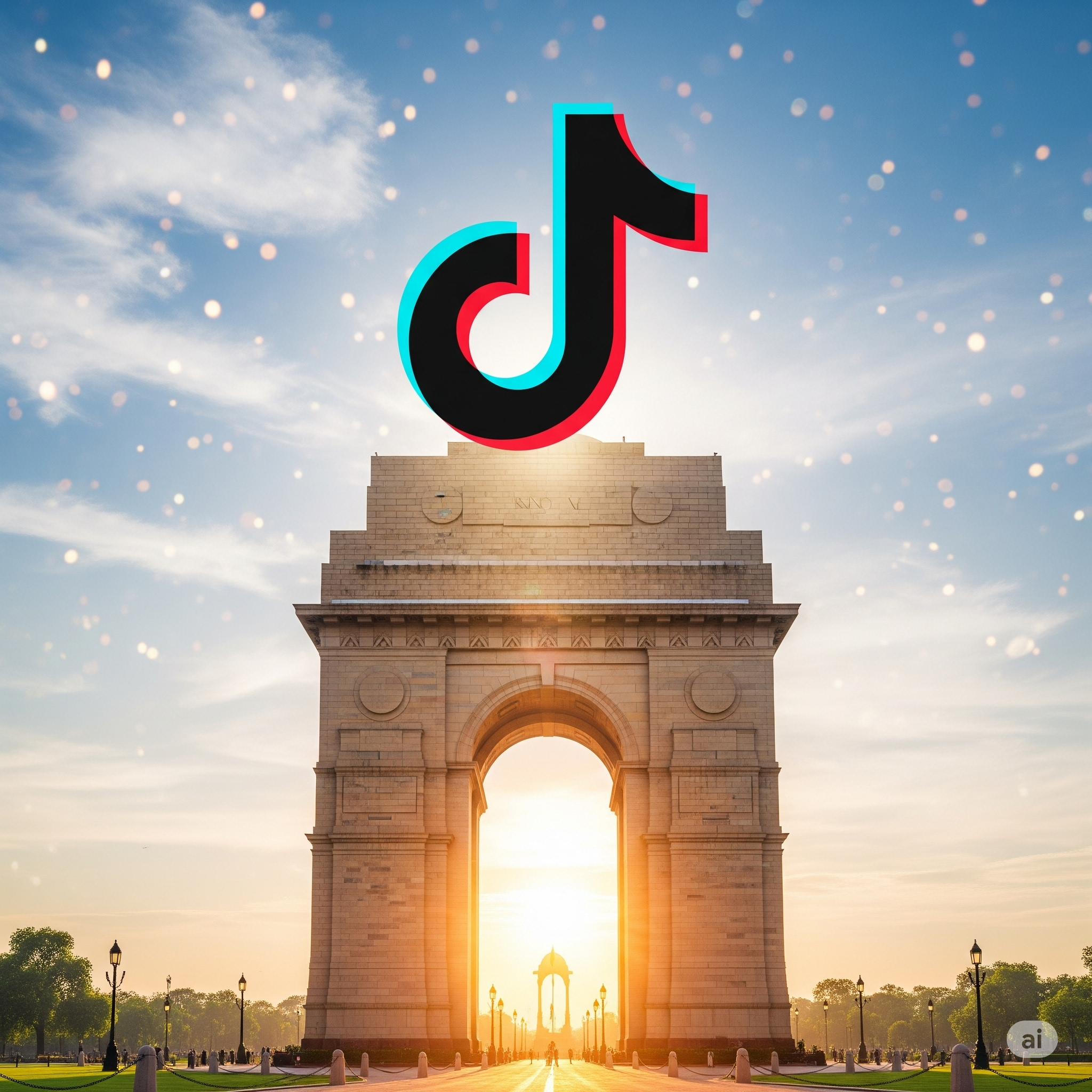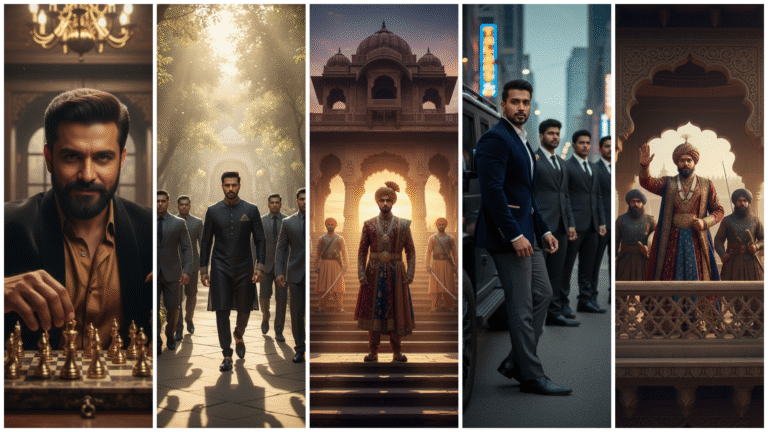
Is TikTok Really Coming Back to India? The Digital Echo After a 5-Year Silence
TikTok coming back? The official website is now open for Indian users.
For five years, a gap has been felt in India’s digital scene. This gap once buzzed with dance trends, lip-sync battles, and a lively, free creativity that connected with over 200 million Indians. The app responsible for this excitement, TikTok, was suddenly banned in June 2020, along with several other Chinese-owned apps. The reason was clear: concerns over national security and data privacy. This action came amid rising tensions between India and China. The ban was decisive, and for a long time, it seemed permanent.
But now, five years later, a sign of life has emerged. A quiet yet significant change has occurred: the official TikTok website is accessible to users in India. For a platform that has been absent for so long, this development has ignited a flurry of speculation, hope, and analysis. Is this the first sign of a comeback? Or is it merely a temporary glitch? This blog post explores the implications of this change, discussing the history of the ban, the landscape of Indian short-video apps in TikTok’s absence, and the diplomatic and political factors involved.
The Ban That Changed Everything: A Retrospective
To grasp the significance of TikTok’s possible return, we must look back at the events of its departure. In June 2020, India’s Ministry of Electronics and Information Technology made a statement that shocked the tech world. The government used its powers under Section 69A of the Information Technology Act to block 59 apps, including TikTok, WeChat, and UC Browser. They stated the apps were harmful to the country’s sovereignty, integrity, defense, and public order.
This decision was unprecedented in its scope and effect. At that time, TikTok was a global giant, and India was its largest international market. The platform served as a launching pad for aspiring artists, a source of income for creators, and a popular entertainment choice for a vast and diverse audience. The ban was not only a political act; it was a societal and economic shock.
The main reasons for the ban were tied to geopolitical issues. The move followed closely after the Galwan Valley clash, a deadly border conflict that strained India-China relations to their lowest point in decades. Besides the immediate military tensions, the government raised concerns that Chinese-owned apps were illegally collecting and sending user data to servers located outside India. Although TikTok’s parent company, ByteDance, claimed it had never shared data with the Chinese government and would refuse to do so if asked, the lack of trust proved insurmountable.
The gap left by TikTok’s exit was vast. Content creators, who had relied on the platform for their livelihoods, struggled to adapt. The ban forced them to switch to other platforms, or worse, risk losing their audience altogether. For users, it signified the sudden end of a beloved source of short-form content.
The Rise of the Replacements: A New Ecosystem Emerges
In the five years since TikTok left, a new environment of short-video apps has thrived in India. The space, once ruled by a single player, became open for new entries. Indian companies quickly took advantage of this, launching several homegrown alternatives. Apps like Moj, Josh, Chingari, and MX TakaTak (which later merged with a competitor) gained popularity, supported by substantial funding and a sense of national pride.
Global companies also took the chance to fill the gap. Instagram launched “Reels,” directly competing with TikTok’s style. YouTube, eager not to miss out, introduced “Shorts.” These platforms attracted a ready audience and offered a familiar user interface for creators and users alike. Competition became fierce, leading to the rise of a new generation of Indian digital stars.
The success of these platforms raises a crucial question: does India still need TikTok? Some argue that the market has evolved and matured. The “Atmanirbhar Bharat” (Self-Reliant India) campaign has opened a new digital avenue, with Indian apps finding their own unique spaces. The short-video arena is no longer a one-horse race; it has turned into a busy marketplace with various players.
However, despite their achievements, the alternatives haven’t fully captured the unique charm of TikTok. The original platform boasted worldwide reach and an algorithm known for effectively matching content to users’ specific interests. Although apps like Reels and Shorts have similar algorithms, many users feel they lack the same level of accuracy and discovery. TikTok had a cultural impact, able to transform a niche trend into a nationwide sensation overnight. This power has yet to be fully mirrored.
The Unblocking of the Website: A Glimmer of Hope or a Test Run?

The recent update that the TikTok website is accessible to some users in India is a notable indicator of a possible comeback. This is not an official announcement from the government or from ByteDance. It’s a subtle, almost hidden, change that has been noticed by a few observant users and mentioned by various tech news outlets.
It’s important to understand what this change signifies—and what it does not. The website being accessible does not mean the app is back. The TikTok application remains unavailable on the Google Play Store or the Apple App Store in India. Without the app, the platform’s functionality is severely limited. Users cannot create or upload new content, and the main experience of endless scrolling and personalized feeds is absent. The website may be reachable, but the ecosystem is still inactive.
So, why is this happening? Several possibilities exist, each with significant consequences:
A Phased Test Run: This could be an initial, discreet experiment by ByteDance. Before a full launch, the company may be testing the waters to identify technical issues and evaluate network infrastructure in India. A gradual rollout to a limited number of users would allow them to gather data and feedback without making a large public announcement.
A Diplomatic Signal: This development coincides with recent signs of improved relations between India and China. Chinese Foreign Minister Wang Yi’s visit to India and a potential meeting between Prime Minister Narendra Modi and Chinese President Xi Jinping at the upcoming Shanghai Cooperation Organisation (SCO) summit hint at opening diplomatic channels. The unblocking of the website could be a goodwill gesture from the Chinese government or a strategic move by ByteDance to show its readiness to reconnect with the Indian market.
A Purely Technical Issue: While less likely, this might result from a technical glitch or an unintended effect of an update. However, given the political sensitivity and the duration of the ban, a simple mistake seems improbable. It is more likely a deliberate action, even if it does not represent a full reentry.
The Hurdles and the Road Ahead
Even if the website’s accessibility is a positive sign, a complete return of TikTok to India is far from assured. Significant obstacles remain for ByteDance and the Indian government to navigate.
The Regulatory Maze: The ban was imposed due to national security concerns. For TikTok to return, the company needs to provide clear and verifiable assurances that these issues have been addressed. This likely means a total overhaul of its data storage and processing practices for Indian users. The Indian government would have to be convinced that user data would be stored only within India and would not be accessible to any foreign government, especially the Chinese one. This would necessitate a level of transparency and legal guarantees that might be hard to achieve, considering China’s national security laws.
The Competition: The market has changed dramatically. While TikTok once dominated, it now faces a crowded field. Instagram Reels, YouTube Shorts, and local apps have captured a considerable share of the user base. TikTok would need to fight for its market presence and provide compelling reasons for creators and users to return. It would also face substantial pushback from local players who have benefitted during its absence.
The Political Climate: The return of TikTok would be a politically sensitive topic. The government would have to justify its decision to a public that has largely moved on, along with an opposition likely to question the wisdom of allowing a previously banned app to come back. How this decision is perceived, especially with an upcoming election cycle, would be crucial.
Awaiting the Official Word
For now, the situation remains in a “wait and see” phase. The accessible website is a strong symbol of a potential shift, but it is not a definitive statement. The social media scene in India buzzes with speculation, as users and creators express their excitement and skepticism.
An official statement from either the Ministry of Electronics and Information Technology or ByteDance would be needed to confirm that a return is truly in the works. Until then, the accessible website acts as a digital echo of a platform that once was. It hints at what might come next and reflects the changing dynamics of technology, politics, and culture in one of the world’s largest digital markets. The coming months will reveal whether this quiet echo will grow into a full return or fade back into silence.




